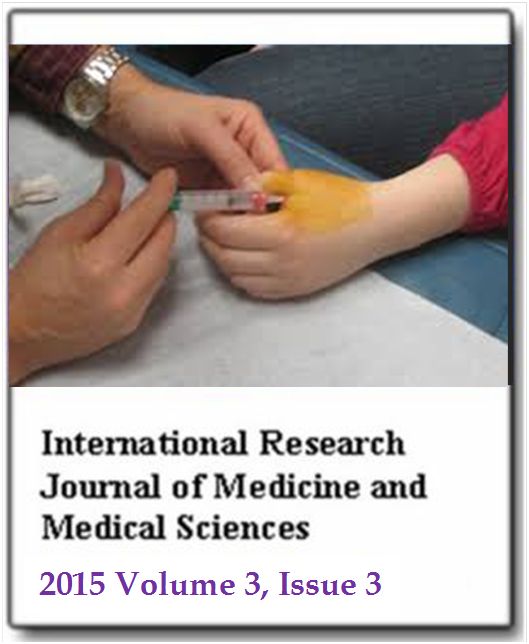Acute kidney injury in patients with cerebrovascular stroke and its relationship to short-term mortality
Sherifa A. Hamed, Ahmad H. Youssef, Amal M. Tohamy, Refaat F. Abd Elaal, Mahmoud M. Hassan and Eman Nasr EldinInternational Research Journal of Medicine and Medical Sciences
Published: July 16 2015
Volume 3, Issue 3
Pages 70-77
Abstract
The adverse outcome after cerebrovascular stroke (CVS) is determined not only by the neurological deficits but also by medical comorbidities including kidney dysfunction. We studied the frequency of acute kidney injury (AKI) with CVS and its relationship to short-term mortality. This study included 80 patients with stroke (mean age: 62.5 ± 6.2 years). Stroke severity was determined using Scandinavian Stroke Scale (SSS). Serum creatinine (SCr), creatinine clearance (CrCl) and kidney injury molecule-1 (KIM-1) concentrations were the measured markers of AKI. Follow-up was done for 3-months or till death. Cox proportional hazards model was used to evaluate contributors to mortality. Compared to reference group, patients had higher SCr (p < 0.05) and KIM-1 (p < 0.001) and lower CrCl (p < 0.01). The majority of patients (86.25%) had normal SCr, while 57.5% had lower CrCl (<70 ml/min) and 92.5% had higher KIM-1 (>0.75 ng/ml). Mortality rate was 35%. Compared to survivors, patients who died had lower SSS, higher SCr and KIM-1 and lower CrCl (all p < 0.001). Higher SCr [Hazard ratio (HR), 1.65; 95% CI, 1.41 to 1.93], KIM-1 [HR, 1.63; 95%CI, 1.21 to 2.19] and lower CrCl [HR, 1.34; 95% CI, 1.09 to 1.65] significantly predicted worse short-term survival. We conclude that AKI is a common complication of CVS. Increase in SCr, KIM-1 and decrease in CrCl concentrations are associated with worse short-term outcome with stroke.
Keywords: Cerebrovascular stroke, acute kidney injury, kidney injury molecule-1, mortality.
Full Text PDF
